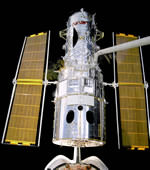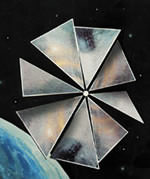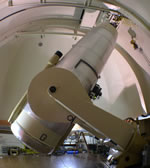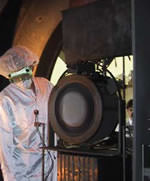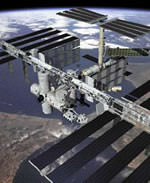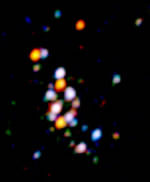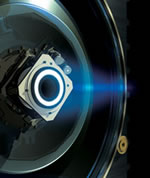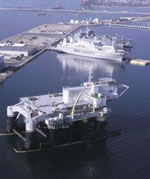
Image credit: Sea Launch
The Odyssey platform and Sea Launch Commander departed home port in California to make the journey down to the Earth’s equator in the Pacific Ocean. This time Sea Launch will loft the EchoStar IX/Telstar 13 broadcast satellite on board a Zenit-3SL rocket. The two-hour launch window is scheduled to begin on August 8 at 0331 GMT (11:31 pm EDT).
The Odyssey Launch Platform and the Sea Launch Commander have departed Sea Launch Home Port for the launch of the EchoStar IX/Telstar 13 satellite for EchoStar Communications Corporation and Loral Skynet. Liftoff is scheduled for August 7, in a two-hour launch window that will open at 8:31 pm PDT (3:31:00 GMT).
The Sea Launch vessels are sailing from Sea Launch Home Port, in the Port of Long Beach, Calif., to the launch site on the Equator at 154? West Longitude. Upon arrival, a 72-hour countdown will begin and the platform will be ballasted to launch depth. Over the course of the three-day countdown, the launch team will perform final tests on the rocket and spacecraft, and prepare for launch operations. The three-stage Zenit-3SL rocket will loft the 4,737 kg (10,443 lb) EchoStar IX/Telstar 13 satellite to a high perigee of 760 km in geosynchronous transfer orbit.
This is the first of several launch contracts Sea Launch will execute for Space Systems/Loral, the spacecraft manufacturer. The LS-1300-class satellite will be operational in its final position in geostationary orbit at 121? West Longitude. EchoStar?s Ku-band fixed satellite services (FSS) transponders are designed to enhance its U.S. DISH Network service. The spacecraft is also equipped with one of the first commercial Ka-band spot-beam payloads in the United States as well as a C-band payload.
In a unique satellite-sharing arrangement, EchoStar will own the Ku- and Ka-band payloads on this satellite. Loral Skynet, a subsidiary of Loral Space & Communications based in Bedminster, N.J., will own and operate the C-band capacity as Telstar 13. From its ideal orbital location and its 24 C-band transponders operating at 36 MHz, Telstar 13 will provide programmers with coverage of North America, including Alaska, Hawaii, Puerto Rico, Mexico and Central America.
Sea Launch Company, LLC, headquartered in Long Beach, Calif., is a world leader in providing heavy-lift commercial launch services. This multinational partnership offers the most direct and cost-effective route to geostationary orbit. With the advantage of a launch site on the Equator, the reliable Zenit-3SL rocket can lift a heavier spacecraft mass or provide longer life on orbit, offering best value plus schedule assurance. Sea Launch has a current backlog of 15 firm launch contracts. For additional information and live coverage of this mission, visit the Sea Launch website at: www.sea-launch.com
Note to editors: Sea Launch will carry a live satellite feed and streaming video of the entire mission on the day of launch. We will post transponder coordinates as well as additional information and high resolution images on a media site at: www.boeing.com/nosearch/sealaunch/
Original Source: Boeing News Release

